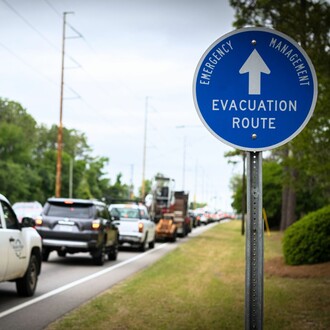International Day for Natural Disaster Reduction: Risk Communication

Scorching summer temperatures and smoky skies have increased Albertan’s awareness of natural disaster risk.
However, a lack of effective risk communication in the province may be keeping Albertans from understanding the extent to which natural disasters may impact their lives and what action they can take.
As part of its endorsement of the Sendai Framework for Disaster Risk Reduction, the Canadian government is encouraging the development of risk communication as a means of risk reduction across the country.
In 2021 Dr. Sandeep Agrawal presented research on understanding risk communication in Alberta’s municipalities conducted by himself and his team, Hana Ambury, Debadutta Parida and Neelakshi Joshi.
The research addresses methods and efficacy of risk communication strategies in Alberta municipalities based on case studies of 5 regions impacted by major disasters in recent years: Calgary, Wood Buffalo, Canmore, Fort Vermilion and Fort McMurray.
The research shows that the efficacy of the 4 common types of risk communication– strategic actions, public engagement, local planning, media & marketing– is impacted by several social factors.
Social contexts, the type of risk, and individual personalities influence how stakeholders perceive risk. Information sources may affect communication based on institutional trust. Framing refers to how risk communication is framed by local officials. Sense of responsibility is the degree to which the public participates and feels engaged. Place based attachment can decrease the willingness of stakeholders to evacuate in an emergency, and increase the likelihood of returning to an at-risk area.
Fragmented information due to siloed channels of communication, and overly technical language can also create significant barriers to communication.
Dr. Agrawal suggests several strategies for tackling these barriers.
Prior experiences with natural disasters and recent public memory can be utilized to make meaningful change. Recent events increase risk perception and can positively impact the efficacy of risk communication. Positive framing can empower individuals to take action by normalizing risk management and emphasizing shared responsibility.
Currently, it is difficult for stakeholders to learn about the risks they may be facing. Many municipalities lack resources to aid in this process and the responsibility falls to individuals to understand how they may be affected by risks in their area. In particular many homebuyers are unaware of the risks of buying property in certain areas and may be facing flood damage, forest fire risk or other risks.
A common knowledge-sharing platform would promote transparent and effective risk communication across municipalities with a long-term focus on improving risk management.
Additionally, the creation of a new institution that fosters collaboration and cooperation between stakeholders would aid in a smoother urban development process that recognizes existing and future risks.
Education is also a promising avenue for risk communication. Teaching children about the risks they face in their municipalities spreads awareness and has the potential to influence the actions of the parents.
On a national scale, Canadians across the country are becoming increasingly aware of natural disaster risks and risk communication should consider the political and social context of each province.
Small municipalities may require external funding and support for risk communication due to less resources and a lower capacity.
You can watch the full presentation on YouTube or read more about Dr. Agarwal’s research.